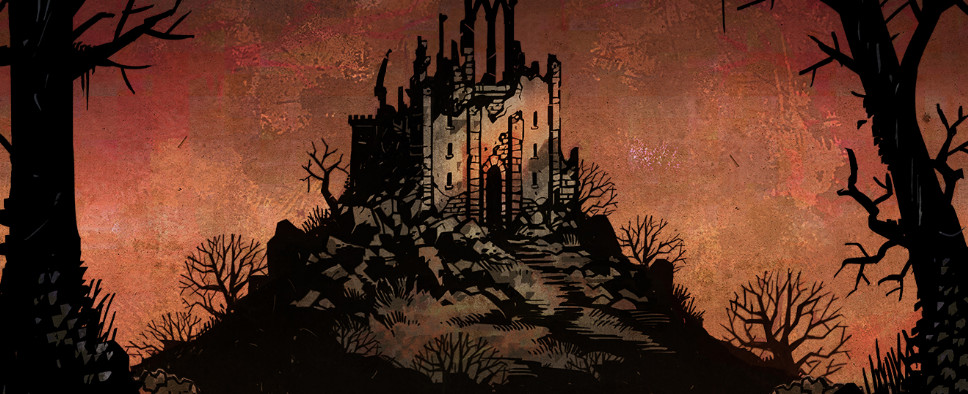Darkest Dungeon Review
-
Category: ReviewsHits: 15084

Article Index
Quests come in a variety of shapes and sizes. The length can be short, medium, or long. The difficulty can be apprentice, veteran, or champion. The theme can be the ruins, the warrens, the cove, or the weald. The objective can be to kill things, find things, activate things, or simply explore. Quests reward gold (for purchasing upgrades and trinkets), heirlooms (for upgrading the hamlet), a trinket, and experience (but only for the heroes who go on the quest).
Each quest puts your party of heroes into a dungeon-like setting, where they travel down hallways and move from room to room. While exploring these locations, they sometimes encounter enemies, and they sometimes find "curios" (aka interactive objects). Enemies always attack, but curios can sometimes be good or bad. For example, a treasure chest is a curio, and it can either give you loot, or it can activate a trap, damaging you and giving you nothing. There are also confessionals, torch stands, dinner carts, spiderwebs, and more. Nicely, some items -- like a key for the treasure chest -- guarantee you a "good" result for a curio, and part of the game is learning how the curios work.
Quests also require your heroes to carry torches and food. The brighter the environment is, the easier your explorations are, but the worse the loot is, so you have to balance how dark you can make things and still survive. Meanwhile, every so often your heroes get hungry, and if they don't receive food then they get stressed and take damage. Longer quests allow you to camp to heal damage and stress, but camping requires food as well, so you have to carry a lot of it to be safe.
Complicating matters is that your party of heroes has limited inventory space. They only get 16 slots total for items, and this includes basic supplies (like food and torches), healing supplies (like bandages and medicinal herbs), and the loot you find. So you have to be careful when outfitting your heroes for a quest so you don't waste space on supplies you're not going to use. And even if you are careful, you're almost guaranteed to find more loot than you can carry, so you have to make decisions between gold, heirlooms, and trinkets all the time.
When your heroes are exploring, the game proceeds at your pace. That is, your light level only dims, your heroes only get hungry, and enemies only appear when you move. If you don't do anything, then nothing happens. Then when a fight starts up, the game switches to turn-based combat, where each participant gets one action per round (except for bosses, who can usually do more than that).
The combat in Darkest Dungeon is surprisingly varied and effective. Your party of four heroes always faces off against four or fewer enemies, making each battle "even," but your heroes are only allowed to do a handful of things on their turn: they can use as many supplies as they want for free (which isn't as powerful as it sounds since none of the supplies do any healing), but after that they only get one action: they can change their position, they can pass their turn (and take stress), or they can use one of their four combat skills. That's it.
The reason combat works so well is because there is a lot of variety to the enemies that you face and how they attack you, there is enough randomness so you can't take any battle for granted, and the high level fights are consistently challenging, even when your heroes are as powerful as possible. There are also numerous ways to attack and defend, and you have to keep changing your tactics based on what you're facing and how the battle is going. So nothing about combat becomes rote. You have to pay attention and think about what you're doing.
As an example, the game gives characters defensive stats against everything. Dodge allows you to avoid attacks if you can beat your opponent's Accuracy. Protection reduces the amount of damage that you take, unless you're taking poison or bleed damage, and then it doesn't do anything. There are also specific defenses against bleed, poison, debuff, stun, and movement attacks. So if you face an enemy with a high Protection, then maybe you try bleed or poison damage against it, or maybe you try to keep stunning it while you wear it down, or maybe you debuff its damage and accuracy so it doesn't hurt you much if it's even able to hit you at all. Or maybe you ignore it if its friends are causing you more problems than it is, or if you can simply kill them more quickly. The variety to the available strategies is excellent. There's always something to try, and no single strategy is the best answer for everything.

